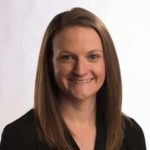Parasomnias are disruptive sleep disorders that cause people to unknowingly perform an action during sleep.
Parasomnias are disruptive sleep disorders that cause people to perform unwanted actions while they are falling asleep, waking up or during sleep. Most people who experience parasomnias will have no recollection of these events occurring. Like other sleep disorders, parasomnias can keep individuals from getting the quality of sleep they need to feel rested.
Although parasomnias are more common in young children, they can occur at any age. They are most likely to occur in 5-25-year-olds. Statistically, parasomnia occurs in anywhere from 4-67% of adults, based on the type of parasomnia that occurs.
There are several types of parasomnias based on the part of the sleep cycle in which they occur and the action or behavior that takes place. The most common type of parasomnia is nightmares, which occur in 66.2% of adults and 10-50% of children under the age of 15. The least common effect is sleep eating, which occurs in only 4.5% of adults and is uncommon in children.
The prevalence of many parasomnias decreases with age in children. For example, confusional arousals occur in 17.3% of children 3-13 years old and only 6.9% of children older than 15 years.
What are Parasomnias?
A parasomnia is a partial arousal from sleep. A parasomnia is defined as a sleep disorder resulting from undesirable physical events or experiences that occur during the initiation of sleep, during sleep or during sleep arousal.
While a person is sleeping, their brain cycles between being awake, non-rapid eye movement (NREM) sleep and rapid eye movement (REM) sleep. NREM sleep includes the states of falling asleep and waking. REM sleep is the deepest form of sleep and usually involves dreaming. The more REM sleep one achieves in a night, the more rested they will feel. Parasomnias are often described by the sleep stage in which they occur. The stage of sleep can affect a person’s reaction to arousal and likelihood to experience a parasomnia.
Parasomnia symptoms include:
- Feeling restless or fatigued, even after a full night of sleep
- Episodes of unwanted behaviors or actions specific to the type of parasomnia
- Being non-responsive or difficult to wake
- Inappropriate responses to people or objects in the room
- No memory of the episodes later
Types of Parasomnias
There are many different types of parasomnias. They are defined by the action or behavior that a person performs while experiencing them, as well as the point in the sleep cycle at which they occur.
Some examples of parasomnias are:
- Sleepwalking, also known as somnambulism, is when a person sits up, stands or walks in their sleep. The person will have no recollection of doing this the next day.
- Sleep talking, also known as somniloquy, is when a person talks in their sleep without being aware of it. This can consist of incoherent uttering, isolated words, multiple words that don’t really form a sentence, or having a full conversation.
- REM Sleep behavior disorder refers to activity that occurs during REM sleep, versus periods of waking or falling asleep like most other parasomnias. The activities can vary greatly and can include talking, swearing, laughing, shouting, reaching, flailing, grabbing, punching, hitting or running. The activities are usually associated with a dream and the person will remember the dream upon waking. The person sleeping will usually wake rapidly and without confusion.
- Nightmares, or nightmare disorder, is characterized by recurrent nightmares, where the person experiences intense and disturbing dreams. These dreams usually involve intense emotions of anxiety, anger or disgust. The person can usually vividly remember the dream and describe it later. Nightmares are strongly associated with a decrease in overall well-being.
- Night terrors manifest as the sleeper sitting up in bed, screaming and showing signs of intense fear. This is usually associated with a dream, which the person thinks is really happening. The person may flail or thrash, which can cause injury to a partner sleeping next to them. Sometimes people experiencing a night terror will bolt from bed and try to run, which can result in injury.
- Confusional arousals are incomplete awakenings that cause a person to be confused or disoriented. They are sometimes referred to as sleep drunkenness. Confusional arousals occur when sleep is interrupted at any point during the sleep cycle. They are generally harmless and do not require treatment.
- Nocturnal leg cramps are sudden, involuntary contractions of the muscles in the calf or foot, that happen during sleep. They can usually be relieved by stretching the cramped muscle. Nocturnal leg cramps may form as a result of dehydration, prolonged sitting or overexertion of the muscles.
- Sleep eating, or sleep-related eating syndrome, is a form of sleepwalking where a person eats while they are asleep. This can be dangerous as it may lead to choking. It has also been reported that people who sleep eat may cook while they are asleep, which can also be very dangerous.
- Sleep paralysis is when a person is unable to make voluntary movements when they are falling asleep or waking up. The person is usually aware that they are awake but are unable to speak or move. During the paralysis, a person might also experience hallucinations that cause them to think they are seeing ghosts or supernatural beings. Sleep paralysis is commonly associated with intense anxiety. It may occur only once in a lifetime or may be a frequent recurrence.
- Exploding head syndrome is when a person perceives a loud noise, such as an explosion, inside their head as they are falling asleep or waking up. The person often thinks they are having a stroke. Other than disturbing a person’s sleep, exploding head syndrome is relatively harmless.
- Bedwetting, or sleep enuresis, is when a person urinates in their sleep. This is common among young children and generally decreases with age. If it does not, it may be considered a bedwetting disorder or it could be associated with another underlying medical condition such as diabetes or a urinary tract infection.
- Teeth grinding, also known as bruxism, occurs when someone involuntarily grinds their teeth while they sleep. This can lead to tooth damage, jaw pain or migraines. People who experience teeth grinding may sleep with a mouth guard to relieve their symptoms.
Causes of Parasomnias
Parasomnias usually occur in people who have a family history of similar disorders. The exact cause of the parasomnia can vary depending on the type of parasomnia. Many are thought to be related to underlying mental health conditions or substance use.
Parasomnias can also be caused by a number of different conditions, including:
- Alcohol use
- Chronic pain
- Illness
- Prescription medications
- Medications or substances that deepen sleep
- Post-traumatic stress disorder
- Stress or anxiety
- Having another sleep disorder, such as sleep apnea or narcolepsy
- Poor sleep hygiene
- Sleep deprivation
- Sleeping with a full bladder
- Disruption of sleep from noise or touch
Diagnosing Parasomnias
Parasomnias can be difficult to diagnose, as most people have no recollection of them occurring. However, if they encounter another person during their parasomnia event, this person will most likely report the event back to them. Parasomnias can also be discovered when an individual notices that objects have been moved during the night or that they have an injury that wasn’t there before they went to sleep.
The Diagnostic and Statistical Manual of Mental Disorders, fifth edition (DSM-V), gives specific diagnostic criteria for parasomnias. To be diagnosed with a parasomnia, a doctor will evaluate a person’s sleep habits. They will take a detailed sleep history, many times with the help of a partner who has witnessed the parasomnia events.
The doctor may ask the person to keep a sleep journal, to get a more accurate idea of a person’s sleep habits. If all of the parasomnia events occur with amnesia of the event, the doctor may perform a polysomnogram. A polysomnogram is an overnight sleep study where the patient’s sleep patterns are observed. This includes identifying transitions into and out of REM sleep and when the parasomnia events occur.
Treatment for Parasomnias
Treatment for parasomnias varies on the age of the patient and the severity of the disorder. Many parasomnias in children will go away with age, so if they are not causing harm, they usually do not require treatment. The same goes for adults. If the parasomnia is not causing harm to the person, or the person they sleep next to, it may not need to be treated.
In cases where the parasomnia is causing the person to lose restful sleep and feel fatigued, or if the person is causing harm, there are treatment options for sleep disorders. This may involve medication or therapy. Several parasomnias respond well to medication. Therapy is highly recommended, especially for people with underlying mental health conditions.
How to Help Someone During a Parasomnia Episode
If you witness someone having a parasomnia episode, it can be frightening, but it is best to stay calm. It is usually not recommended to try and wake them as this can be dangerous. A person experiencing a parasomnia may become agitated or try to fight back. If they have left their bed, gently and safely guide them back to it.
If a person knows they have a parasomnia, they can take precautions to prevent them from injuring themselves or others. Some of these precautions include removing firearms, sharp objects or furniture from the room where they sleep, putting pillows next to the bed for extra padding, or making sure windows and doors are closed and locked. Some people may even use an alarm on the door to alert them if someone is sleepwalking during the night.
Sleep disorders can often co-occur with other mental health issues or substance use disorders. Some people may turn to substance use to deal with the fatigue of a parasomnia.
If you or a loved one are struggling with parasomnia and a co-occurring substance use disorder, The Recovery Village can help. To learn more about our comprehensive treatment plans, call today to speak with a representative.


Bjorvatn, B.; Gronli, J.; Pallesen, S.“Prevalence of different parasomnias in t[…] general population.” Sleep Medicine, December, 2010. Accessed June 21, 2019.
Fleetham, John A.; Fleming, Jonathan A.E. “Parasomnias.” Canadian Medical Association Journal, May 13, 2014. Accessed June 21, 2019.
Singh, Shantanu; Kaur, Harleen; Singh, Shivank; Khawaja, Imran. “Parasomnias: A Comprehensive Review.” Cureus, December 31, 2018. Accessed June 21, 2019.
The Recovery Village aims to improve the quality of life for people struggling with substance use or mental health disorder with fact-based content about the nature of behavioral health conditions, treatment options and their related outcomes. We publish material that is researched, cited, edited and reviewed by licensed medical professionals. The information we provide is not intended to be a substitute for professional medical advice, diagnosis or treatment. It should not be used in place of the advice of your physician or other qualified healthcare providers.